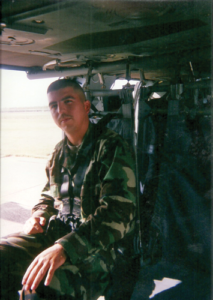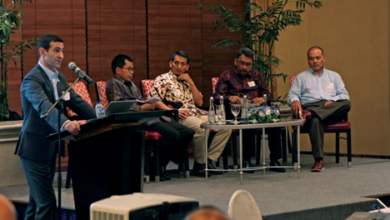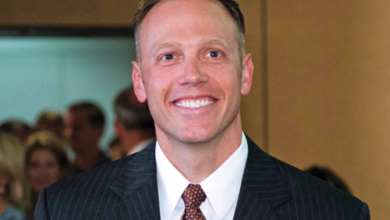IADC partners with Wounded Warrior Project to employ injured veterans for WellSharp proctoring
Hiring program, managed through Lloyd’s Register, makes IADC the biggest employer in Warriors to Work Program
By Amy Rose, Director – External Relations, IADC
Through WellSharp, IADC is not only improving well control training for the global drilling industry but also improving the lives of injured veterans in the United States. The association, along with Lloyd’s Register, has partnered with the Wounded Warrior Project to develop a first-of-its-kind program to provide meaningful employment opportunities for injured service men and women. Through this program, IADC is now the biggest employer within the Wounded Warrior Project’s Warriors to Work Program.
As many as 160 Wounded Warriors have been listed in IADC’s system, and an estimated 125 of them have actually proctored for IADC, according to Michael Rogers, Project Manager at Lloyd’s Register, which manages the proctors under IADC’s direction.
Whom we’re helping

Yolanda Poullard began her military career in the Reserves Officers’ Training Corps (ROTC) program at Grambling State University in Louisiana. For 19 years, she served in the US Army, achieving the rank of Major, with deployments in South Korea, Kuwait and Afghanistan.
It was in 2012 in Afghanistan, while out on a routine patrol with her female engagement team, that an improvised explosive device (IED) exploded and changed her military trajectory.
Internal injuries, along with the mental scars sustained in multiple war zones, sidelined her Army career. She is still undergoing surgeries to repair the damage, and in 2015 she received a medical discharge from the Army.
Her husband, Reverend Dr Stacy Poullard, a graduate of West Point, served in Vietnam and retired from the Army as a Colonel in 1993 after 23 years of service.
Abel Esquivel, a married father of four, was a petty officer first class in the US Navy and a veteran of the Gulf War era, whose injuries, including single-side deafness and a double lower spinal cord injury, ended his military career in 2005.
Battlefield medicine has advanced considerably in the past several decades. While more veterans are returning home from war zones, many do so with considerable physical and mental disabilities. More than 52,000 servicemen and women have been physically injured since 2011, and an estimated 400,000 more live with mental wounds, including combat-related stress, major depression and post-traumatic stress disorder. An additional 320,000 are believed to have experienced a traumatic brain injury while on deployment. For those returning home from war zones with significant injuries, their military careers over, it can be difficult to nearly impossible to resume full-time employment. Yet, they retain the desire to remain independent and provide for themselves and their families.

This is where the Wounded Warrior Project steps in. The project was founded to foster the most successful, well-adjusted generation of wounded service members in US history and to raise awareness and enlist the public’s aid for injured veteran needs, help injured service members aid and assist each other and provide direct programs and services to injured veterans.
One of the key elements of the project is to provide opportunities for employment. Through its Transition Training Academy and Warriors to Work programs, thousands of veterans have received training and have been placed in part- and full-time employment.
In early 2015, IADC and Lloyd’s Register looked to the Wounded Warrior Project while working on the development of WellSharp, IADC’s revised well control training and assessment program. Along with the redesigned test and training requirements, the program required the use of a proctor, or invigilator, to monitor test takers.
“It was at a long, all-day meeting with our training providers in late 2014 that someone in the room suggested that the proctor positions would be a great employment opportunity for veterans,” said Mark Denkowski, IADC Executive Vice President for Operational Integrity. “It was from that small seed that this program has grown. When we partnered with Lloyd’s Register as the proctor management company, it was written into the contract that as many veterans be hired for these positions as possible. Lloyd’s Register was equally as enthusiastic about making this program a success.
“The partnership with the Wounded Warrior Project has been incredibly successful, and we have received positive feedback from both the proctors and training providers,” he continued. “And this program contains an important caveat. Unlike with other third-party contract employment, if a training provider wants to hire a proctor for a permanent position in their company, they are able to do so. It’s an incredible opportunity for possible long-term employment for these veterans.”
In just a year and a half, this collaboration has resulted in the employment of approximately 125 veterans, including Ms Poullard, Reverend Dr Poullard and Mr Esquivel.
“My wife has a newfound sense of worth,” Reverend Dr Poullard described. “She was a major in the army, injured in Afghanistan, and she thought her working days were over. Now she can go out and participate in the workforce… We watch the drama evolve as the guys go to class all week and take their test, and the majority of them do pass it because the instructors are so good, but you feel for those who don’t pass because they have families to take care of. As a proctor, these are the things we see.”
Proctors are generally contacted at the start of each week with testing dates and times. The work is part-time, as the testing process is usually complete within 4 hours, but proctors have the latitude to set their own work schedules.
“I would recommend this work to others in a heartbeat,” said Reverend Dr Poullard. “It gives our family a lot of flexibility, and we know that the work is available to us, the training providers we are sent to are good places to work, and I am happy about that,” said Reverend Dr Poullard.
Mr Esquivel lives in Beeville, Texas, 3.5 hours southwest of Houston, and began proctoring in May 2015, primarily for PCI College in Victoria, Texas.
“I like the work that I’m doing, and I’m thankful for this opportunity,” Mr Esquivel said. “In this position, I want to make sure that everything is done correctly. Everyone needs testing and refresher courses, so it’s great that this testing program exists. I’ve since passed on information to other veterans and connected them with the Wounded Warrior Project Houston office.”
“We are thrilled with the way this program has gained momentum, and I am inspired by the veterans involved,” Mr Denkowski said. “We are looking forward to the future and the opportunity to continue to work collaboratively with the Wounded Warrior Project and Lloyd’s to provide employment to injured veterans.”
Reverend Dr Poullard added: “This program is something that was sent from heaven. Someone had a real good heart to enlist wounded warriors to do this type of work. To see the look in my wife’s eyes as she says ‘got to go to work’, it helps her get through the changes she has been going through post-war.
“She is happy about the opportunity, and I’m happy for her and happy for our family. It is a blessing that was unexpected. The Wounded Warrior Project, IADC, Lloyd’s – they have all done everything, and it has been beyond our expectations. We couldn’t ask for anything more.” DC




